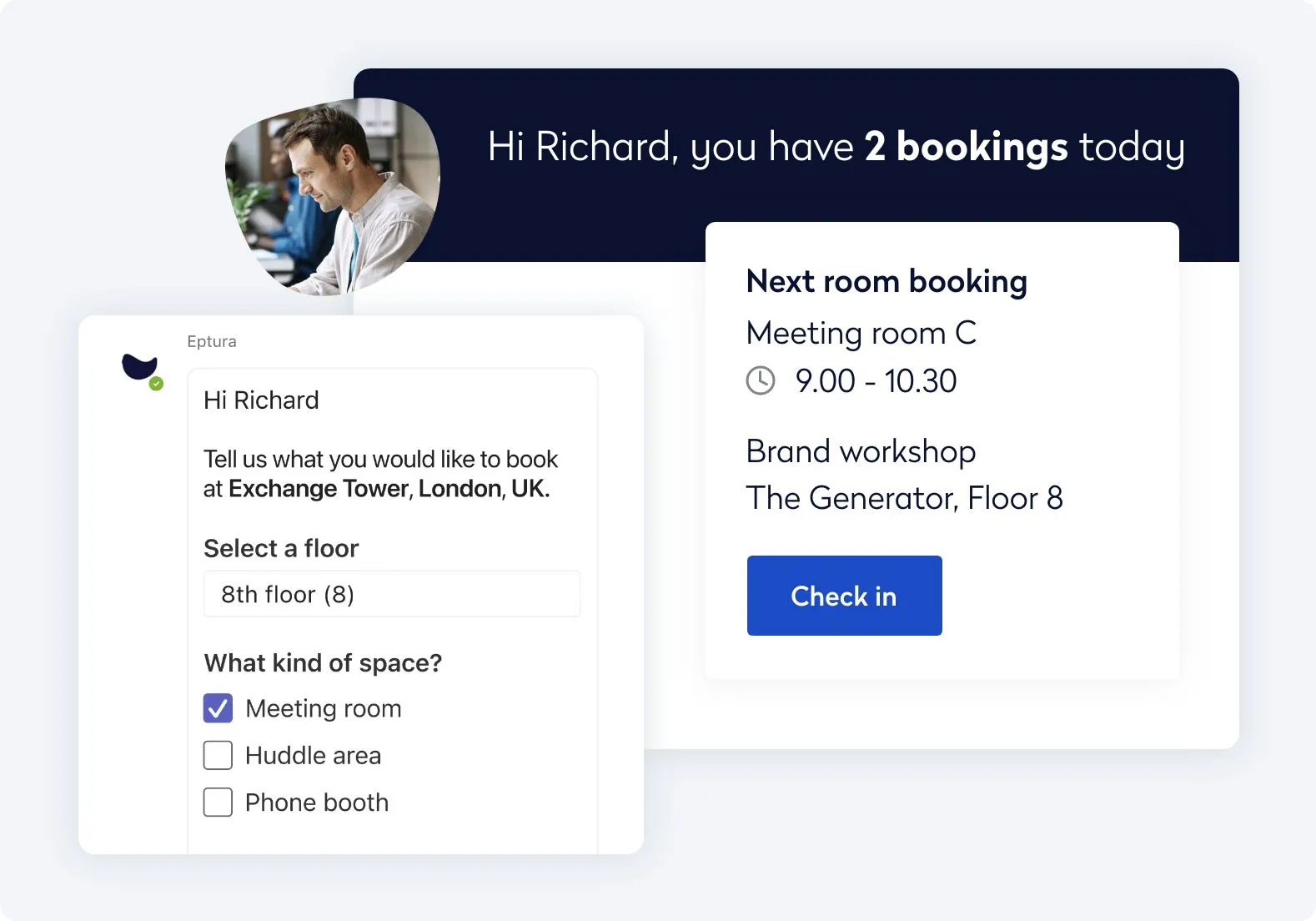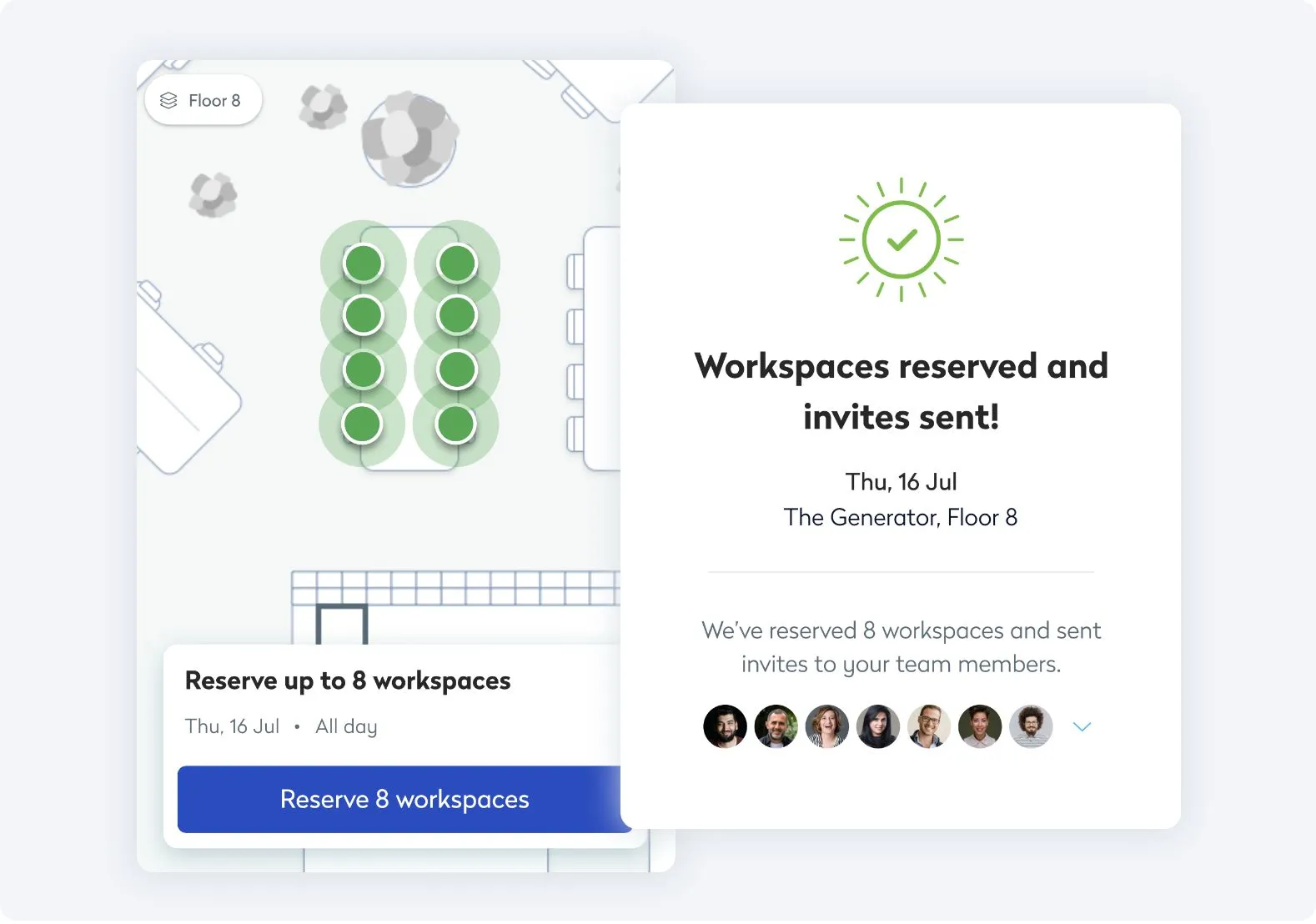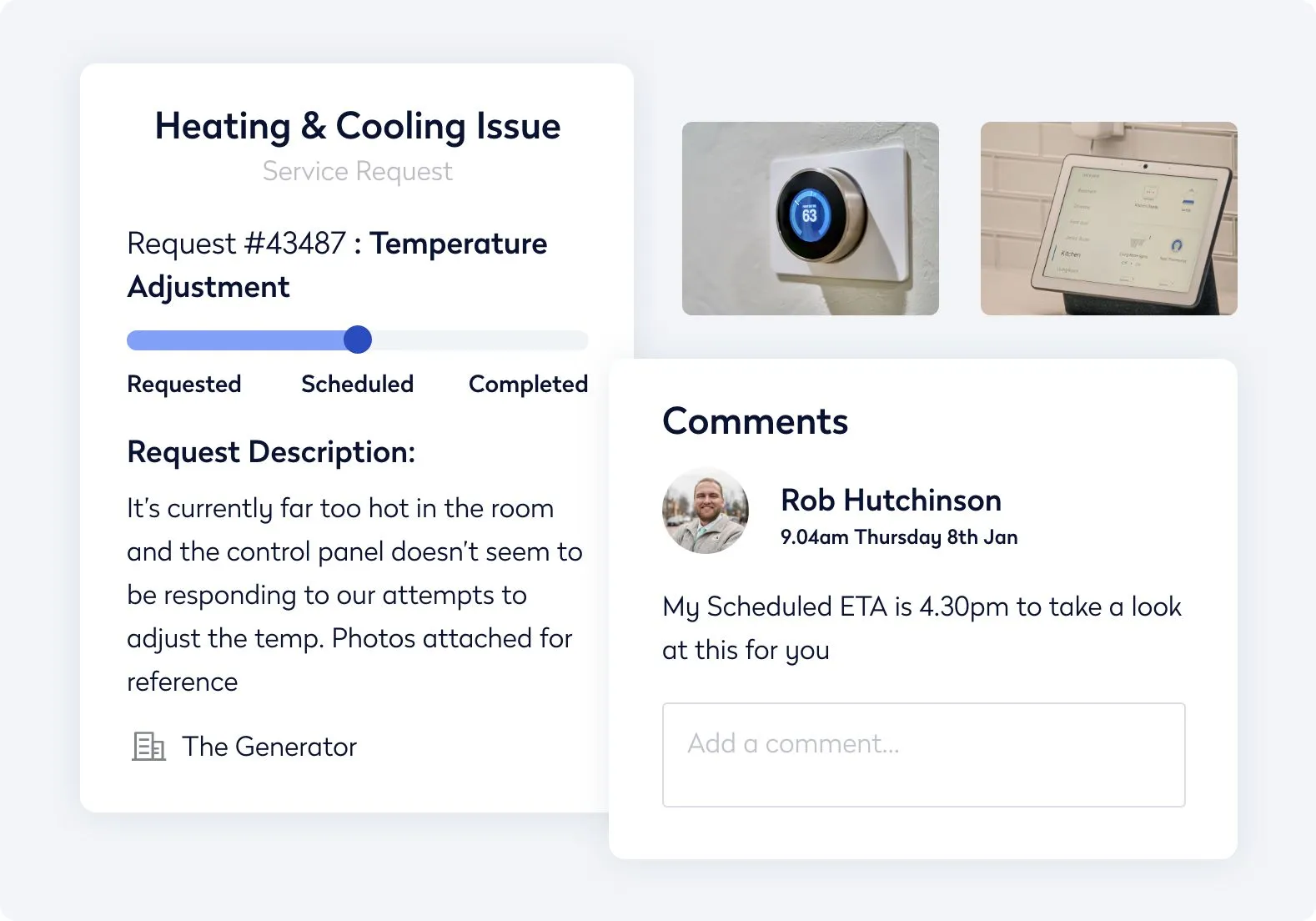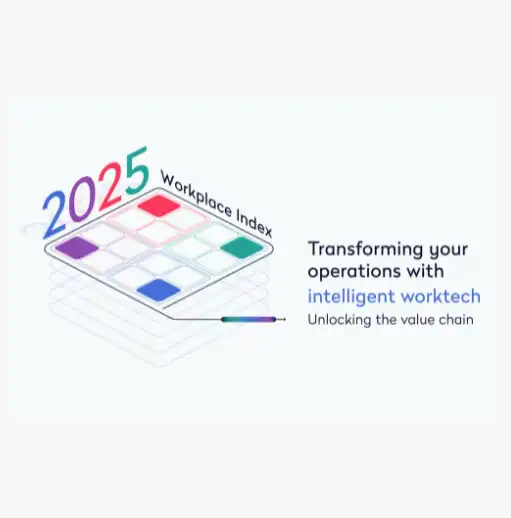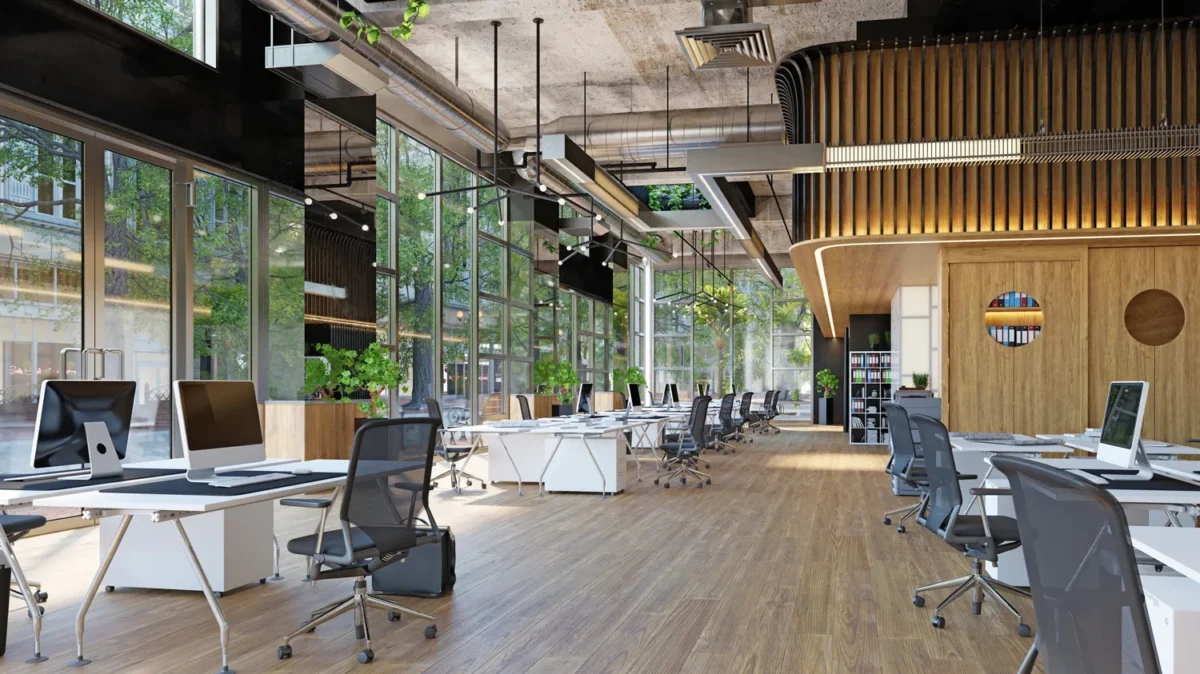
In today’s hybrid workplace where occupancy and utilization fluctuate regularly, space planning and creating workspaces that matter to employees has never been more important. The days of a 1:1 desk-to-person ratio are now more the exception than the rule. Sharing space in an office is now as common as using a smartphone to request a ride home or rent a shared bicycle.
For many organizations, the workplace is now ‘on demand’ which has far-reaching implications for workspace and office designers. Employee behavior is dynamic. Many employees want to spend at least part of their time working in an office to collaborate in person with their colleagues, reserve a quiet place to concentrate, and take advantage of on-site amenities.
Why is this important for a workspace designer? Because everyone expects simple, easy-to-use digital workplace experiences. And these experiences are becoming more integrated into collaborative meeting rooms, casual conversation areas, wellness rooms, reception areas, building access, desks, private phone booths, office floor neighborhood zones, and more.
It’s not as simple as “If you build it, they will come.”
If you build it, how will they reserve it? How will they collaborate with remote teams and not have it feel far away? How much energy will they consume?
Design thinking can help you better understand how employees need to use space and test ways to improve workspace engagement and activity with technology. Everyone is planning for dynamic conditions and for a potentially larger set of stakeholders.
Whether right sizing or expanding space, workplace decisions often involve large committees including facility managers, human resources, technology, and compliance teams. Designing for everyone’s needs requires fresh thinking.
Background and overview: What is design thinking? Where did it come from?
Born out of the industrial and product design of the 1950s and 1960s, design thinking is an innovative approach to problem solving that has become increasingly popular in technology products and software. But it applies to any product or service, including workplace design.
It’s a creative and systematic process that encourages experimentation and iteration — and focuses on the use of a product or service by people. By using design thinking to create workspaces and office experiences, organizations can benefit from increased productivity, creativity, and engagement among workers.
David Kelley, founder of design firm IDEO, is a pioneer of design thinking. He outlined a “human-centered designer’s toolkit” in the book “Creative Confidence” which contains five elements for the process: Empathize, define, ideate, prototype, and test.Design thinking is an iterative process that helps organizations to develop innovative solutions that are user-centered and solve real-world problems. It encourages the use of creative confidence to take risks without fear of failure and experiment with ideas to create meaningful solutions that ultimately have a positive impact on customers and businesses.
A 2015 Harvard Business Review article describes it as “[a] set of principles collectively known as design thinking — empathy with users, a discipline of prototyping, and tolerance for failure chief among them — is the best tool we have for creating those kinds of interactions and developing a responsive, flexible organizational culture.”
Defining the problem: Generating ideas and applying a design mindset
Defining the problem is essential. It helps to identify the goal and objectives of a project. You analyze the current design to identify potential improvements, explore different solutions to evaluate the impact, and create a prototype that can be tested with employees.
The first step is to understand the needs of employees and customers. Designers should identify what they want out of the workplace – which could include increased utilization from a better experience. For example, in today’s workplace, more people are going into offices year over year which adds complexity for facility and asset teams managing asset and space every day because it’s not the same number of people all five days of the business week.
The number of visitors per location is now higher than pre-pandemic levels across all industries and regions. Eptura’s Q2 Workplace Index finds across-the-board increases in global desk bookings:
- Asia-Pacific: 83%
- Europe, the Middle East and Africa (EMEA): 70%
- Americas: 84%
The effect? It may be time to rethink your visitor experience or revisit your space planning and utilization metrics. And it could mean you need to update when maintenance is performed based on the day’s least likely to have employees. Hint: It’s probably Friday.
Next, designers should explore different ideas and solutions for meeting the identified needs. The goal here is to generate ideas that push boundaries and challenge existing processes or protocols. Creativity is key; designers should be encouraged to think outside the box when coming up with solutions. To help this process along, designers can use brainstorming sessions and other creative activities to generate new ideas quickly and efficiently.
Finally, once they have generated ideas, designers should evaluate their potential impact by testing them in real-world settings and environments. This allows them to see how their designs interact with users in various contexts before starting. Experiments are also important for building confidence in design decisions before committing resources for implementation.
Are there office areas that could be consolidated or reconfigured to meet your actual needs? What technology will you use to test?
Love workplace design and innovation? Hear the winners of “Work Design” Magazine’s 2023 Next Work Environment competition with Lee Fox, Founder & Executive Publisher.
Principles of design thinking
Design thinking can provide an invaluable asset to workspaces, enabling businesses to foster a culture of innovation and quickly generate, share, and assess the economic viability of ideas. This creative, agile mindset incorporates the ability to ask questions from a variety of perspectives – including employees themselves – and is applicable to the design of the workplace, as well as the evolution of a culture.
Design for everyone
Design thinking is not just for designers; it encourages a creative mindset for everyone. Real-world examples are behind the successes of Amazon, Zappos, Tesla, and Pixar. These companies value creative friction and encourage their employees to do the same.
There are many types of workers today – and it’s important to be inclusive and find representation across your organization, including groups that are neurodiverse. Employees have many different needs and respond to workplace and technology stimuli differently. This can include everything from having a range of space types to choose from to lighting to reducing noise and distractions in ‘quiet areas’ – and having easy ways to navigate a space, such as wayfinding.
Design for agility
Agility is another key component. An agile workspace supports a variety of work modes. It enables employees to decide and co-create their own work experiences and encourage feedback loops for thought sharing and suggestions for improvement.
Design for restraint and emotion
There’s another key principle of design thinking: What to leave out. How to edit and simplify to hit the objective. It’s called restraint. Understanding what to exclude on purpose. When done well, experiences are appreciated, and most importantly, they are used.
“By removing features, a company offers customers a clear, simple experience,” reflects Jon Kolko, founder of Austin Center for Design. “The thermostat Nest — inside, a complex piece of technology — provides fewer outward-facing functions than other thermostats, thus delivering an emotional experience that reflects the design culture of the company.”
Need to revisit your space planning? Read our ultimate guide to space optimization in the hybrid workplace.
Design thinking and innovation: benefits of process
From increased customer satisfaction and loyalty to innovative solutions that solve existing problems, companies can take advantage of the process to create employee and workspace experiences that are tailored specifically to their needs. Additionally, by fostering creative confidence among employees and encouraging experimentation without fear of failure, companies can leverage the power of design thinking to create truly unique solutions.
“Things like getting a haircut, navigating your local healthcare system, or even public transportation are great examples,” explains Linn Vizard, a principal service designer and founder of Made Manifest. “When these services are poorly designed it feels like no one has thought through the needs of people using them. In contrast, well designed services are easy to navigate and understand.”
In a workplace context, this could be about digitizing the visitor experience or reducing energy use in unused space with occupancy sensors. It could also be adjusting preventive maintenance schedules to keep up with demand and reduce on-demand work order volume.
When applying design thinking to workspaces, it is important to prioritize tasks and stay focused on the goal. This requires action-oriented thinking, where individuals take initiative to solve problems and create meaningful solutions. Developing creative confidence is also essential to remaining motivated and open-minded. Creative confidence encourages individuals to embrace new ideas, explore different methods of problem-solving, and be open to constructive feedback.
Failure should not be seen as an obstacle but rather as an opportunity for growth; creative failure can lead to unique solutions that have a positive impact on customers and businesses. It is important to remember that successful products or services are rarely created in one attempt – the process often needs iteration for the best outcome to be achieved.


